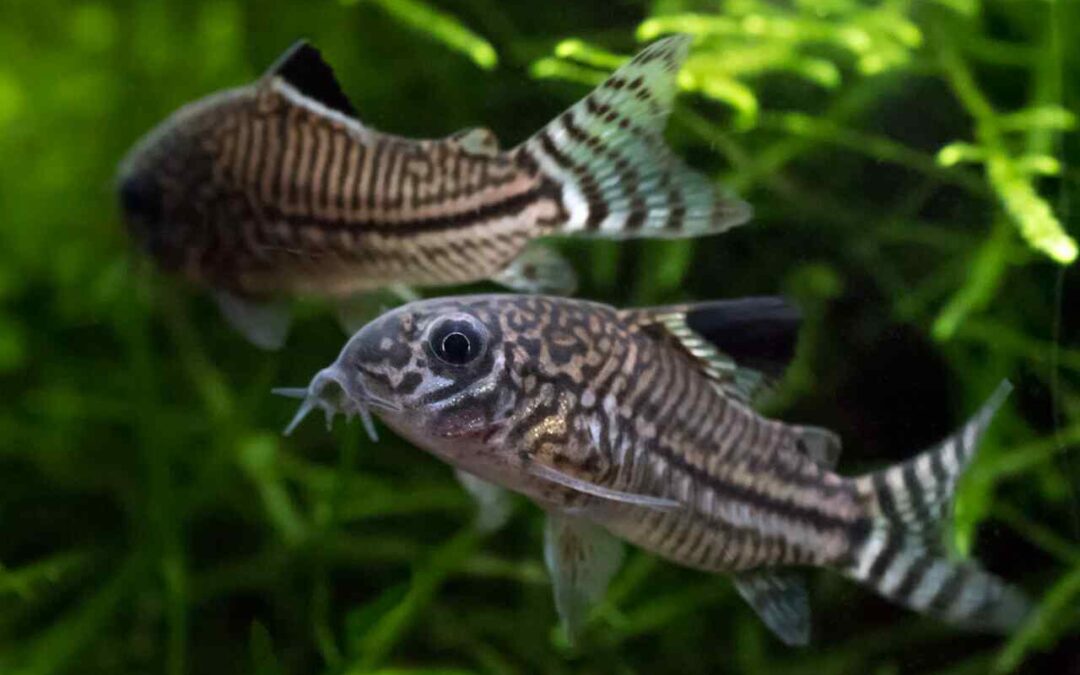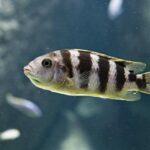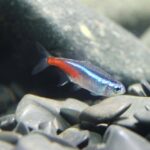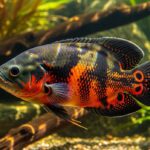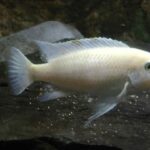If you’ve ever strolled through the freshwater fish section of an aquarium store, chances are you’ve spotted small, armored catfish busily combing the substrate. These charming bottom-dwellers are Corydoras, often affectionately called “Cory cats” or “Cory catfish.” They’re peaceful, hardy, and endlessly fascinating—making them a favorite choice for both beginner and experienced aquarists.
But did you know that there are over 160 recognized Corydoras species? Each has its own unique markings, size, and quirks. Some are common staples in the hobby, while others are rare gems sought by collectors. In this guide, we’ll explore the most popular types of Corydoras fish, their care needs, and what makes them special.
Why Corydoras Are So Popular
Before diving into the different types, let’s touch on why aquarists love these little fish so much:
- Peaceful nature – Corydoras won’t bother tank mates and thrive in community setups.
- Cleanup crew – They help keep the substrate clean by scavenging leftover food.
- Active behavior – Their playful schooling movements are fun to watch.
- Hardy and adaptable – Many species tolerate a wide range of water conditions.
Here’s an extra fun fact: Corydoras have a unique adaptation where they can gulp air at the surface and absorb oxygen through their intestines. This helps them survive in low-oxygen waters in the wild—a behavior you’ll often spot in your tank too.
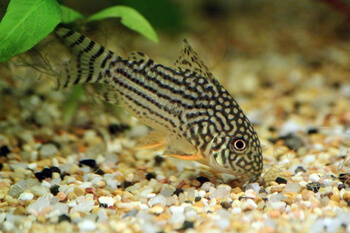
Common Types of Corydoras Fish
Here are some of the most popular Corydoras species you’ll likely encounter in the hobby:
1. Bronze Corydoras (Corydoras aeneus)
One of the most widespread and beginner-friendly Corys, the Bronze Cory comes in shades of metallic bronze, green, or even albino. They’re hardy, social, and very affordable.
Size: 2.5–3 inches
Best for: Beginners and community aquariums
2. Panda Corydoras (Corydoras panda)
Named for their cute black patches around the eyes and tail, Panda Corys are among the most beloved varieties. They prefer cooler water and look stunning when kept in groups.
Size: 2 inches
Best for: Peaceful community tanks with cooler temperatures
3. Pepper Corydoras (Corydoras paleatus)
These Corys have a mottled, speckled pattern that helps them blend into gravel substrates. They’re hardy and very active, often darting up to the surface for gulps of air.
Size: 2.5 inches
Best for: Beginners who want a lively and resilient species
4. Julii Corydoras (Corydoras julii)
With their fine, spotted pattern and elegant appearance, Julii Corys are a favorite for planted aquariums. However, they’re often confused with Corydoras trilineatus (the False Julii).
Size: 2–2.5 inches
Best for: Aquarists who appreciate detailed, striking patterns
5. Sterbai Corydoras (Corydoras sterbai)
Known for their striking white spots on a dark body, Sterbai Corys are one of the most visually striking species. They also tolerate higher temperatures, making them great companions for fish like Discus.
Size: 2.5 inches
Best for: Warmer water tanks and aquarists seeking a bold look
6. Bandit Corydoras (Corydoras metae)
These charming fish sport a black “bandit mask” over their eyes and a dark stripe across their tail. They’re lively, schooling fish that thrive in groups of six or more.
Size: 2 inches
Best for: Aquarists who want a playful, social species
7. Emerald Corydoras (Corydoras splendens)
Technically not a true Corydoras but very closely related, Emerald Corys are larger, growing up to 3.5 inches. Their shimmering green scales make them stand out in larger community tanks.
Size: 3–3.5 inches
Best for: Medium to large aquariums with ample swimming room
8. Three-Stripe Corydoras (Corydoras trilineatus)
Often mistaken for the Julii Cory, this species has a bold horizontal stripe with a network of reticulated spots. They’re hardy and active, adding movement to the bottom of the tank.
Size: 2.5 inches
Best for: Beginner to intermediate aquarists
9. Skunk Corydoras (Corydoras arcuatus)
These fish feature a black stripe running from the head down the back, resembling a skunk’s pattern. They’re a bit more sensitive than some species but still make excellent community fish.
Size: 2 inches
Best for: Experienced aquarists who can provide stable water conditions
10. Pygmy Corydoras (Corydoras pygmaeus)
Perfect for nano tanks, these tiny Corys max out at just about 1 inch. Unlike many Cory species that stick to the bottom, Pygmy Corys often swim midwater in schools, creating a unique dynamic.
Size: 1 inch
Best for: Nano aquariums and aquarists who love schooling behavior
Caring for Corydoras Fish
Regardless of type, Corydoras share some general care requirements:
- Tank size: Most species do well in tanks of 20 gallons or more (smaller species like Pygmies can thrive in 10 gallons).
- Group size: Keep them in groups of at least 6—Corys are social and need company.
- Substrate: Soft sand or smooth gravel is ideal; rough substrates can damage their barbels.
- Diet: Sinking pellets, wafers, and frozen/live foods (bloodworms, brine shrimp).
- Water conditions: pH 6.5–7.5, temperature 72–78°F (some species prefer slightly cooler or warmer ranges).
Another fascinating tidbit is that Corydoras aren’t just scavengers—they’re also little adventurers. In the wild, some species migrate in huge groups during rainy seasons to find new feeding grounds. Aquarists often notice a similar burst of activity when performing water changes, as it mimics rainfall and can even trigger breeding behaviors.
Best Tank Mates for Corydoras
Corys are incredibly peaceful, so they pair well with:
- Small tetras (Neon, Cardinal, Ember)
- Guppies, Platies, and Mollies
- Dwarf Gouramis
- Rasboras
- Shrimp and snails
Avoid keeping them with aggressive or large predatory fish that might harass or eat them.
Tips for a Happy Corydoras Tank
- Provide hiding spots – Driftwood, caves, and plants give them security.
- Oxygen-rich water – Corys gulp air at the surface, but good aeration is still important.
- Regular water changes – Clean water helps prevent infections and keeps them active.
- Observe their behavior – A happy Cory school will constantly forage and dart playfully.
Fun fact: Corydoras are surprisingly “talkative.” They can produce clicking or squeaking sounds by rubbing their pectoral fins against their sockets, a behavior known as stridulation. While you might not always hear it, some aquarists report faint squeaks when Corys are handled or stressed.
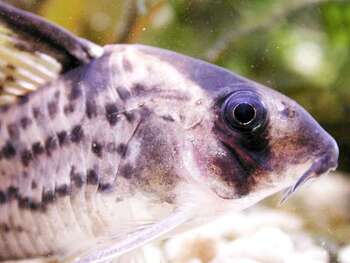
FAQs About Corydoras Fish
- How many Corydoras should I keep together?
At least six. They’re schooling fish and become stressed if kept alone or in small numbers. - Do Corydoras eat algae?
Not really. While they may graze on biofilm, they don’t actively eat algae. They’re scavengers, not algae-eaters. - Can Corydoras live with bettas?
Yes, in most cases. Bettas stick to the upper levels of the tank, while Corys stay at the bottom. Just make sure your betta isn’t overly aggressive. - How long do Corydoras live?
With good care, most species live between 5–10 years, and some even longer. - Can I mix different types of Corydoras?
Yes! While they prefer their own kind, different Cory species will often school together if kept in groups. - Do Corydoras need a heater?
Most species do well in standard tropical temperatures, so a heater is usually necessary unless your room stays consistently warm.
Final Thoughts
Corydoras are more than just bottom cleaners—they’re fascinating, social, and full of character. From the ever-popular Bronze Cory to the dainty Pygmy Cory, there’s a variety for every aquarist’s taste and tank setup.
If you’re looking to add a lively and peaceful presence to your aquarium, you can’t go wrong with Corydoras. Just remember to keep them in groups, give them a soft substrate, and enjoy watching their quirky behaviors. Whether you stick with a classic Panda Cory or hunt down a rarer species, these little armored catfish will quickly become the heart of your tank.
And here’s the best part: the more time you spend with them, the more you realize just how intelligent and curious they are. These aren’t just “cleanup fish”—they’re tiny personalities with habits, routines, and social bonds. For aquarists who love to observe natural behavior up close, Corydoras are a joy to keep.

